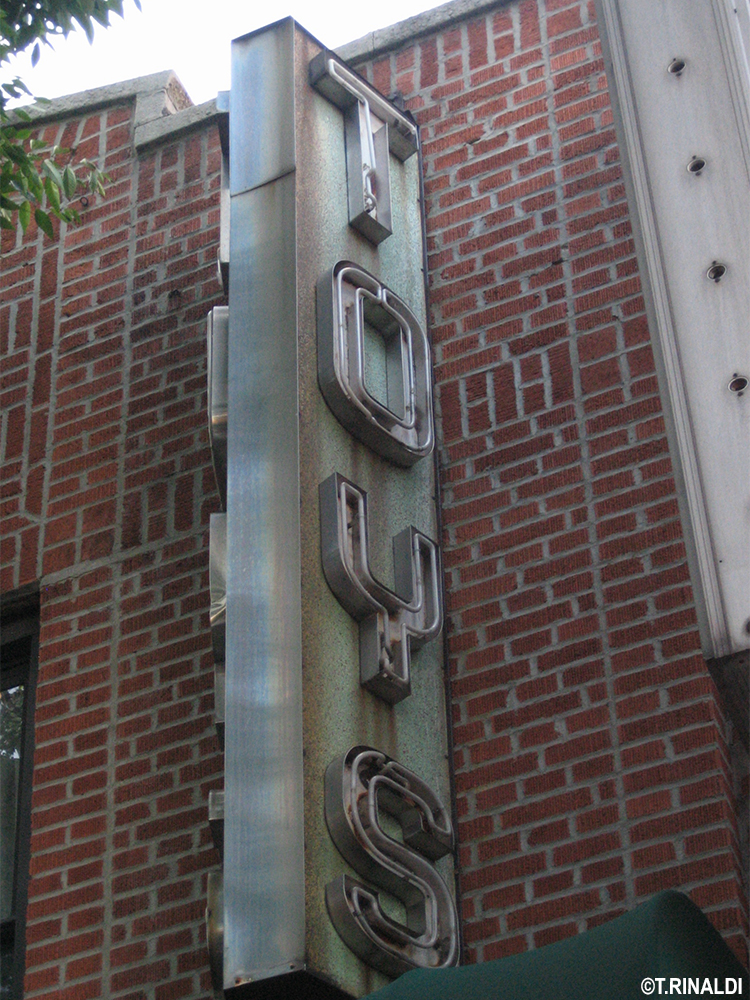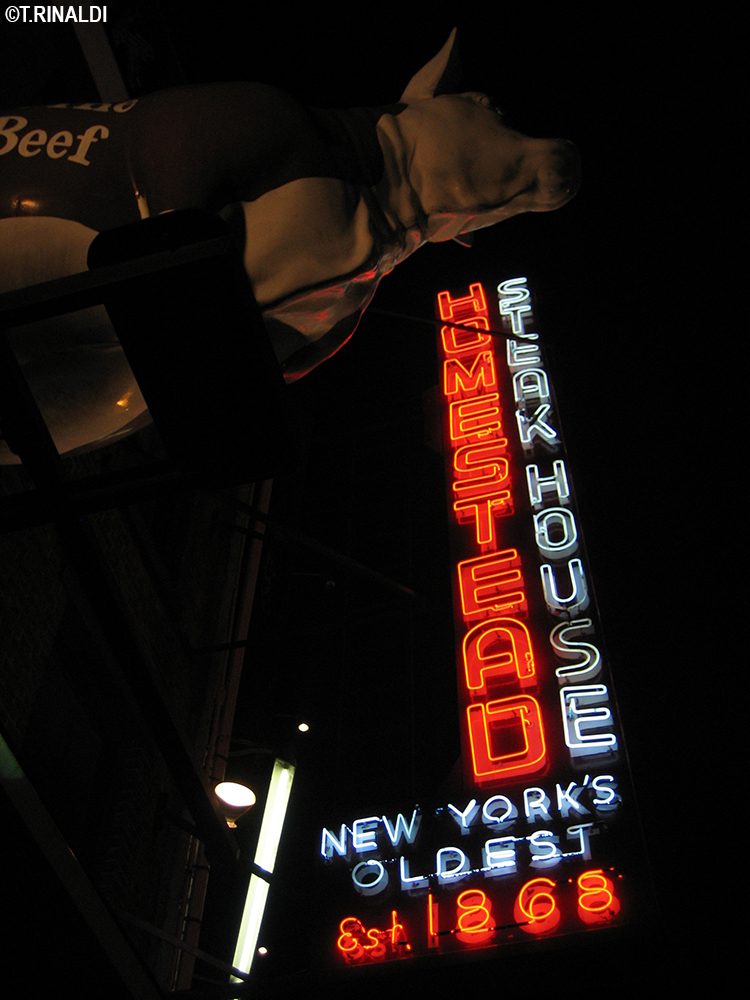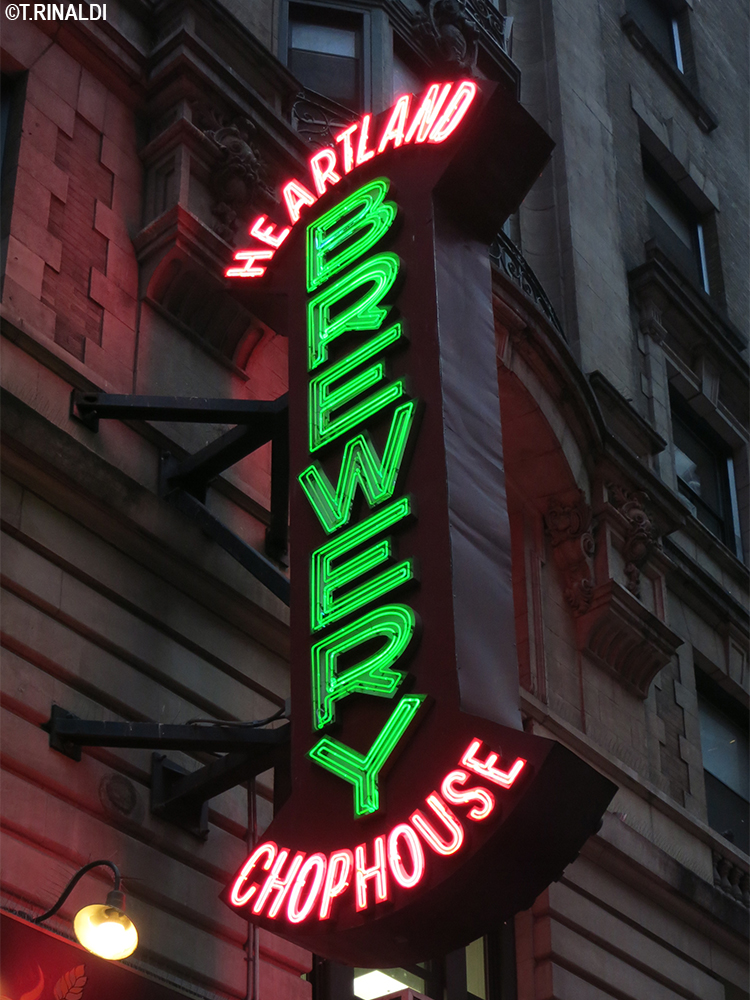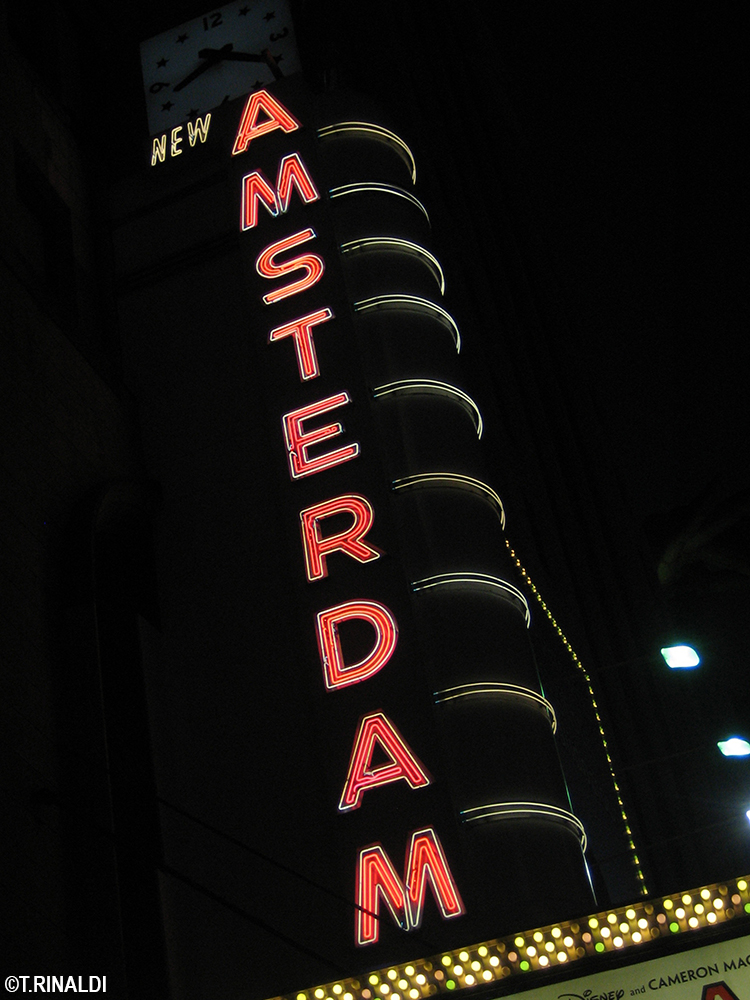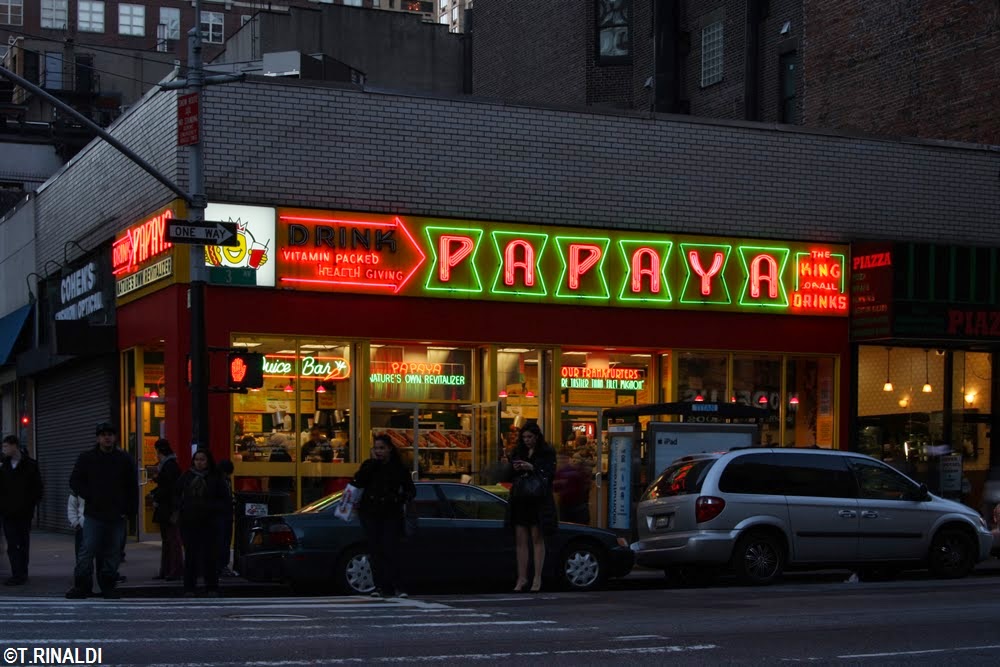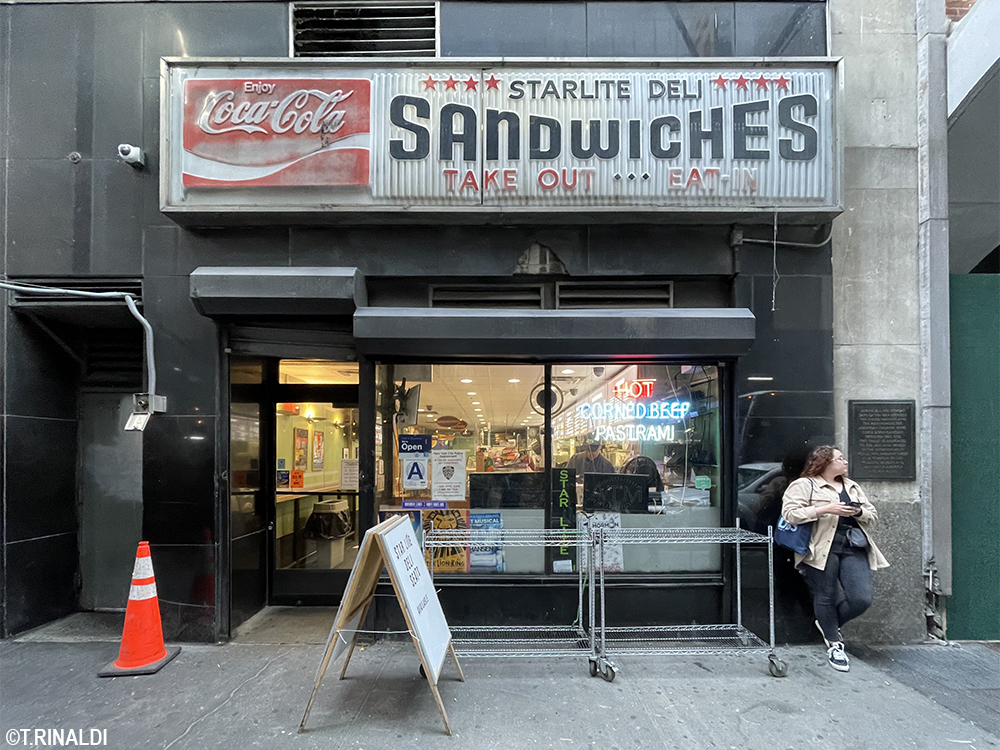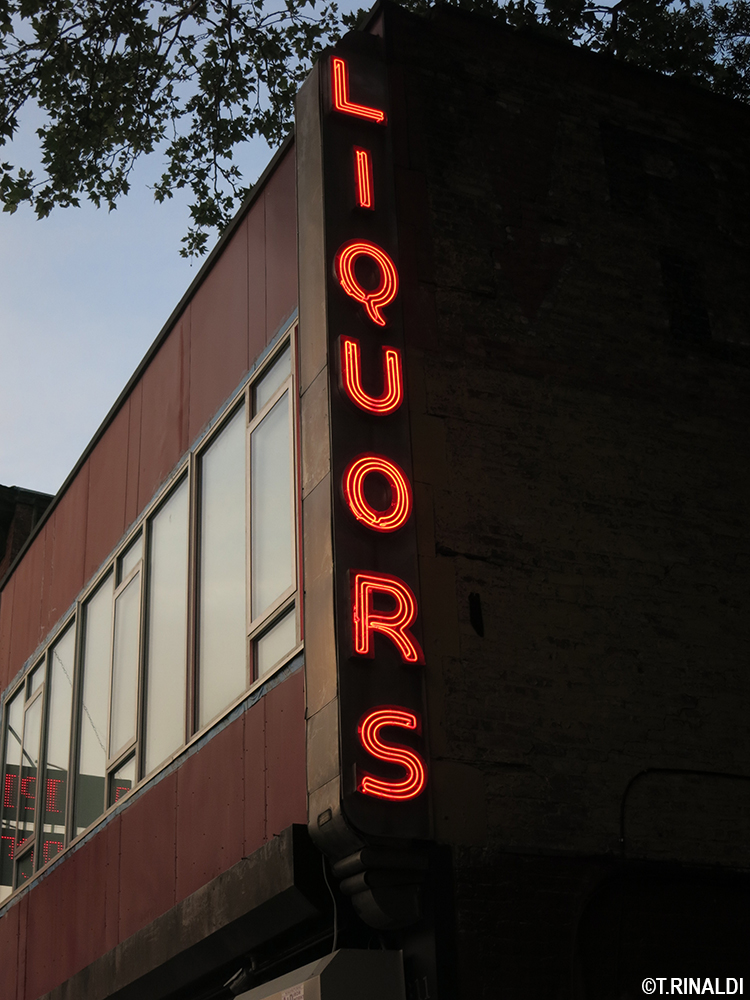It's that time again, time to shake the dust of this old blog and tally up another year's worth of New York's neon losses. This year's death toll is a bit higher than that of previous years, sadly, perhaps a measure of what seems to be an intensified development frenzy that has come to grip the city in the wake of the pandemic slowdown. As with previous editions of this post, the list below includes some signs that may have disappeared prior to 2023 but whose loss only came to light (if that's the right word) this year.
Garry Jewelers, 474 Fifth Av., Park Slope, Brooklyn (c. 1961)
This perfectly-preserved sign and storefront sat more or less abandoned for a decade since the mom-n-pop jewelry store within finally fizzled out sometime around 2010. As hopes dimmed that the place might somehow spring back to life, admirers remained optimistic that a new tenant might come along and seize on the unique retro charm of Garry’s jewel of an intact midcentury commercial facade, one of the best surviving specimens of its type anywhere in the five boroughs. Alas, Brooklyn correspondent Wayne Heller passed by in February 2023 only to find the place fully gutted and its postcard-perfect storefront completely replaced in anticipation of a new tenant that had yet to appear.
Neil’s Coffee Shop, 961 Lexington Ave., Upper East Side, Manhattan (c. 1966)
If a place like Neil's Coffee Shop was ever going to disappear, surely it would have done so a long time ago: anything that had survived this long must be here to stay... or so many of us naively hoped. For all its longevity (it had reportedly opened in 1940) Neil's proved no more enshrined than the most disposable parts of the city's ephemeral landscape when the grim reaper came calling early in 2023. Eater reported that the restaurant owed as much as $1 million in unpaid rent, and the venerable diner met its ignominious end at the hand of city marshals this past April. Its sign was carted off to parts unknown not long thereafter. The storefront remains vacant at press time.
Alleva Dairy, 188 Grand Street, Little Italy, Manhattan (1953)
One of the year's more painful losses came this past March when Little Italy's stalwart Alleva Dairy called it quits after a 130-year run, citing an inability to keep up with the rent. The Times reported that the landlord offered to forgive more than $600,000 in unpaid bills if the owners packed up and left quietly. Alleva did just that, taking its vertical neon blade sign (installed in 1953) along with it. The management announced that the age-old cheese shop would reopen at a new location in Lyndhurst, New Jersey (a move similar to that of Brooklyn's Queen Marie Italian Restaurant, which decamped to Bernardsville previously), but this seems not to have come to pass as of year's end.
Jack’s Toy Center, 909 Kings Highway, Midwood, Brooklyn (c. 1955)
Having outlived the business it advertised by decades (Jack's had already vanished by the 1980s, per the city's tax photo archive), it seemed the winds of attrition might just have forgotten about this relic sign on King's Highway in Midwood, Brooklyn. No such luck: the sign is now listed on eBay and can be yours for the princely sum of $3,000, if you can coax it down from the second floor perch where it's kept a watchful eye on generations of Brooklynites passing below.
Old Homestead Steakhouse, 56 9th Ave., Chelsea, Manhattan (c. 1945)
Reportedly founded in 1868 as the Tidewater Trading Post, the Old Homestead bills itself as the "oldest continuously operating steak house in the US," and until last year it had one of the oldest signs in New York to back up the claim. The restaurant survives, but its fantastic luminous beacon - installed c. 1945 in place of an earlier neon sign - has been stripped of its neon and slathered in uninspiring LED sign faces, its owners apparently tired of paying to keep the old contraption alight.

Pioneer Supermarket, 289 Columbus Ave., Upper West Side, Manhattan (c. 1960)
With its big bold italic letters blasting their neon glow out across Columbus Ave., the Pioneer's unmistakable sign was a favorite landmark among admirers of New York's vanishing midcentury storefronts. The ancient supermarket is with us still, but its uniquely lovely neon is no more. The West Side Rag reported on the sign's disappearance back in March. At the time, the Pioneer's management reassured concerned neighbors that the sign was merely out for repairs, but those proved empty promises when a plastic-faced, LED simulacrum appeared in place of its great neon predecessor a few weeks later.
Kessler’s Liquors, 23 E 28th St., Midtown, Manhattan (1959)
Kessler's landmark LIQUORS sign was a New York classic, with its generic copy rendered in workaday pre-Helvetica letterforms traced in stainless steel channel letters mounted to a stainless steel raceway, this was among the last of hundreds of signs like it that once could be found all over town. Forced to move to a smaller storefront down the block a few years back, the old wine shop took its sign with it, moving its bold neon letters inside over the checkout counter. Sadly Kessler's reboot was not to last: the shop and sign have now vanished, leaving nary a trace behind.
Roșie O’Grady, 800 Seventh Av., Midtown, Manhattan (c. 1981)
Though it looked like something that might have been around since the 1930s, Rosie O'Grady's landmark projecting neon only appeared on this prominent corner five blocks above Times Square after the Irish Bar set up shop here in the 1980s. After more than forty years, Rosie's seemed as well ensconced on Broadway as any of the marquee names that frequented the place. Yet the restaurant closed abruptly in July amid reports of a dispute with its landlord, S.L. Green Realty. Its sign, which seemed an entrenched part of the landscape here, is indeed gone now. Late reports hint at an impending rebirth for Rosie's at a new location around the corner.
Heartland Brewery, 127 W43rd St., Times Square, Manhattan (c. 1995)
Not an especially old sign, Heartland's bold vertical herald was a modern classic, peering out over West 43rd Street just east of Times Square. The sign and restaurant both did a disappearing act in the wake of the pandemic; some decent new neon has lately appeared in its place.
The New Amsterdam is alive and well but its marquee is neon no more. Originally opened in 1904, the art nouveau theater's streamlined neon vertical sign appeared when the establishment went from being a live stage theater to showing movies in 1937 (the sign underwent further modifications in the mid-1950s). As alterations to the original facade, the sign and marquee might have vanished when Disney funded a lavish restoration of the venue in the 1990s, but happily they were kept and restored. They survive today, one of the rare electric signs of any kind that enjoys the protection of city Landmark designation, though this did not keep the sign's animated neon from quietly making way for fake neon LEDs, a development that does not bode well for the future of neon more broadly.
Papaya King, 179 E 86th St., Yorkville, Manhattan (1964)
For all its charm as one of New York's most appealing neon storefronts, it didn't take a real estate whiz to know that the writing was on the wall for Yorkville's 90-year old hotdog stand known as the Papaya King, whose storefront occupied a tiny, one-story building situated on some of the most expensive scraps of land in the country. The bell finally tolled for the King's modest abode this year when plans for a massive new high-rise were announced for its site. Founded by Gus Poulos back in 1932, the Papaya King had been at its most recent address since 1964. The tiny hotdog shop reportedly found a new home just across Third Avenue, but more than six months after it closed the business has yet to reopen. Its wonderful sign, which figured into a number of previous posts at this blog, remains above the empty storefront at press time, a desecrated husk.
Starlite Delicatessen, 212 W44th St., Times Square, Manhattan (c. 1984)
Not neon, but deserving of an honorable mention here nonetheless, the Starlite Deli's backlit plexiglas "privilege sign" was typical of the kinds of signs that displaced neon in the streetscape after the 1960s. A small placard mounted to one side marked this as the work of Brooklyn's Salzman Sign Co., once one of the most prominent neon shops in New York, its surviving works including the great assemblage of neon fascia signs at Nathan’s Famous in Coney Island. Though the sign looks like it could be older, Starlite reportedly opened in 1984; it ended its 39 year run with the retirement of its longtime owner, Jung Min Kim, in April 2023. The sign itself has been preserved at the New York Sign Museum in Brooklyn.
American Neon, Lefcourt Empire Bldg., 989 Sixth Av., Midtown, Manhattan (c. 1927)
Also not neon but undeniably worthy of mention on this list, the painted ghost sign of the American Neon company vanished this year along with the 21-story Lefcourt Empire building, from whose side it had presided over the north end of Herald Square since the late 1920s. A relic of a long-vanished chapter in the early history of New York's neon business, American Neon emerged as a competitor to the Claude Neon-affiliated franchises that attempted to maintain a monopoly on the neon business around the world, until the latter company's critical patent finally expired in the early 1930s. In its brassy bid to break Claude's stranglehold on the business, American Neon built a giant neon "airplane beacon" atop developer A.E. Lefcourt's new tower at 37th St. and Sixth Av., which reportedly could be seen for hundreds of miles. Neither the beacon nor the company lasted more than a few years, but it left a subtle mark that endured in the palimpsest of New York's commercial necrology until this year.
AND THE ONES TO WATCH NEXT YEAR ...
T-Bone Diner, 107-48 Queens Blvd., Forest Hills, Queens (c. 1963)
Opened in the 1930s, Queens' T-Bone Diner quietly closed up shop back in 2022. Its great neon roof sign had been a neighborhood landmark since replacing earlier neon signage during a modernization sometime circa-1963. Patch has reported on a move afoot to revive the venerable eatery, but as of December 2023 the place remains dark.
Roebling Liquors, 311 Roebling St., Williamsburg, Brooklyn (1945)
Word on the neon street is that the new owners of this long-time Williamsburg liquor retailer are looking to unload their beautiful stainless steel vertical sign, a 1945 work of the Salzman Sign Co. of Brooklyn (see Starlite Deli blurb above).
Theatre 80 St Marks, 80 St Marks Pl., Lower East Side, Manhattan (c. 1964)
After a long string of ominous news reports regarding the future of the East Village's beloved "Theatre 80," the small off-Broadway venue finally succumbed this past April, following a prolonged dispute with creditors. The theater's longtime owner, Lorcan Otway, whose family ran the place from the time it opened in 1964, has continued to pursue various means of refloating the business but the building was reportedly sold in in May and the marquee remains dark at press time.




